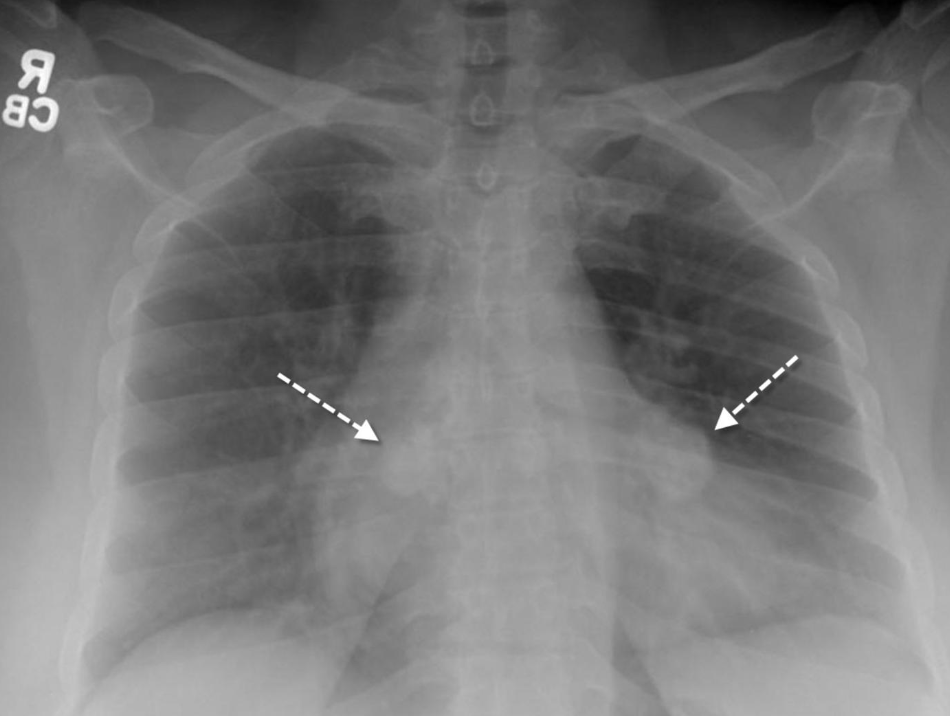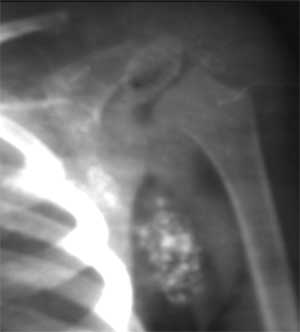The lymph nodes are an important part of our immune system. They expose our lymphocytes to invaders like bacteria, fungi, and viruses to activate the lymphocytes to fight them off. The lymph nodes are shaped like a bean and are in clusters all over the body. They are usually found in the groin, neck, and armpit areas. While they can become enlarged during an infection, calcified lymph nodes may also occur. This happens when there is a granulomatous response to an infection. This article will help you understand more about this condition.
Functions of Lymph Nodes
The lymph nodes are full of white blood cells that can detect infection and keep them from spreading all over the body. They filter out foreign organisms from the fluids in the lymphatic system that are drained from the body’s organs and tissues. The white blood cells are exposed to microorganisms inside the node so they can build up antibodies to battle the infection or disease. The lymph nodes are actual glands that are made up of lymphatic tissue and are encapsulated. When they are visible on imaging, they look like clusters of grapes. When there isn’t anything going on in your body, sometimes the lymph nodes are not even visible.
Mechanism of Lymph Nodes Calcification
Lymph node calcification occurs as a result of calcium deposits in the lymph node during normal swelling. When you have foreign microorganisms, the lymph nodes trap and screen out anything that will cause infections. This process causes swelling and is how your doctor knows you are suffering from an infection. During lymph node swelling, they don’t always go back to the same size they were prior to the infection. As you begin to heal, the lymph nodes may form a mass from calcium deposits which leads to calcification of the gland.
In Figure 1, you can see an example of calcified lymph nodes in lung tissues:

Figure 1: Lymph node calcification, Lungs
In Figure 2, you can see a calcified lymph node in the armpit.
 Figure 2: Calcified Lymph Node, Armpit/Axillary
Figure 2: Calcified Lymph Node, Armpit/Axillary
Calcium builds up in the lymph nodes over time due to infections. In the lungs, this is usually caused by either tuberculosis or histoplasmosis (a fungal infection). This is most common in some parts of the United States where histoplasmosis is present in soil and the air. The fungus gets into the lungs and may not cause any symptoms. As they grow, they can cause a mass in the windpipe which then leads to coughing. Many cases are often misdiagnosed as bronchitis, side-effects of medications, post nasal drip, asthma, or acid reflux.
If you have a calcified lymph node in the groin, neck, or armpit it may be from fighting any of the following infections: sexually transmitted diseases, mononucleosis, HIV, or some bacterial infections. Calcifications in these areas can also be caused by certain types of cancer and medications including seizure medications (carbamazepine or phenytoin), gout medications, sulfa drugs, and penicillin. The measles vaccination has also been known to cause lymph node swelling. Lastly, someone with autoimmune disorders may also experience lymph node calcifications in the later stages, and this usually affects all of the lymph nodes in the body.
Possible Causes of Calcified Lymph Nodes
- Radiation Therapy to Treat Cancer
- Tuberculosis
- Valley Fever (Coccidioidomycosis)
- Tuberculosis in the Digestive Tract
- Tuberculosis in the Lymph Nodes
- Round Worm Infestation (Filariasis)
- Histoplasmosis (Fungal Infection)
- Cancer that Has Spread Throughout the Body
- Colon Cancer
- Ovarian Cancer
- Lymph Node Disorders
- Bone Cancer
- Follicular Thyroid Cancer
- Papillary Thyroid Cancer
- Non-Hodgkin’s Lymphoma (Lymph Node Cancer)
- Toxic Reaction to Tuberculosis Vaccine
There may be some conditions that can “appear” to be calcified lymph nodes in an x-ray result, but are actually something else. This is because the density may be thick and appear calcified even though it isn’t. Other things that may mimic the lymph nodes are: an aneurysm, thyroid masses, goiters on the thyroid, parathyroid tumor, cysts on the thymus, and calcifications in the pulmonary artery.
Indications of Calcified Lymph Nodes: Is It Serious?
If a calcified lymph node is found, this in itself isn’t an issue. When a lymph node is calcified, it is an indication of another problem in the body. It most likely indicates either an infection or possibly cancer in the area of the lymph node. Calcifications can also be caused by scar tissue from a previous injury or infection. In cases of cancer, the lymph node is usually removed for biopsy and to prevent the cancer from spreading.
Lymph nodes that are calcified are more like scar tissue from the resulting infection or cancer. The event that caused the calcification most likely happened years before and you most likely don’t even know it is there. A calcified lymph node is cause for further testing to see if the infection is ongoing, but treatment on the actual lymph node is usually not necessary.
In some instances lymph nodes that are calcified may cause pain. This can happen in the chest area if the lymph node pushes into a blood vessel that supplies the heart. In this case, doctors may opt to surgically remove the lymph node to relieve the pain.
